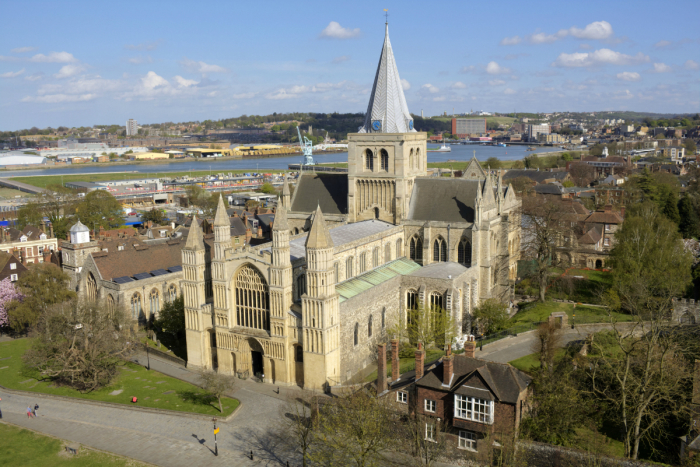Putt-putt golf in England’s second-oldest cathedral irks churchgoers and preservationists

It is hoped a temporary miniature-golf course will bring more visitors inside Rochester Cathedral.
Quite predictably, the installation generated international headlines with churchgoers and religious commentators calling it sacrilege and historic preservationists objecting to what they said is a misuse of England’s second-oldest cathedral, formally known as the Cathedral Church of Christ and the Blessed Virgin Mary, in historic Rochester.
While it is unclear if the number of visitors will actually increase, there is little question money could never buy this kind of publicity. Meanwhile, cathedral officials stand by the nine-hole putt-putt course.
“For over 1,400 years Rochester Cathedral has been a center of learning for the community. By temporarily installing an educational adventure golf course we aim to continue that mission, giving people the opportunity to learn while they take part in a fun activity in what for many night be a previously unvisited building,” the Rev. Rachel Philips, a cathedral spokesman, said in a prepared statement. “We hope that, while playing adventure golf, visitors will reflect on the bridges that need to be built in their own lives and in our world today.”
Situated in the nave, as the central interior space where congregants typically sit is called in church architectural terms, the course features a model bridge at each hole.
The present-day edifice was built after the Norman Conquest in 1066 and stands opposite a ruined castle of the same era at a strategic position near the River Medway. It replaced an earlier building from the 7th century, not long after St. Augustine of Canterbury arrived in England to convert the pagans.
Controlled by Anglicans since the Church of England’s break from Rome, it features prominently in English Roman Catholicism as the then-bishop of Rochester was martyred and subsequently canonized as St. John Fisher over his refusal to side with King Henry VIII and against the papacy.
While enthusiasts of old churches know the cathedral, it isn’t nearly as visited as nearby Canterbury Cathedral or Westminster Abbey and St. Paul’s Cathedral in London. Yet, Rochester Cathedral is a splendid example of medieval church architecture.
Of particular note is the magnificent 12th century Norman or Romanesque great west door with its tympanum containing a relief of Christ in majesty. The interior also includes remains of medieval wall paintings that were whitewashed during the Reformation. Bibliophiles will want to see “Textus Roffensis,” a medieval book containing several pre-Magna Carta laws and charters including the 7th century law code of King Æthelberht handwritten in Old English.
If you go
Located about 30 miles south of London, Rochester (population 62,982) is easily reached by car and train.
Rochester Cathedral visiting hours are 7:30 a.m. to 6 p.m. Monday through Friday, 8:30 a.m. to 5 p.m. Saturday, and Sunday from 7:30 a.m. to 5 p.m. Unlike other cathedrals, admission is free to individual visitors not attending worship services.
Spires and Crosses, a weekly travel column exclusive to The Christian Post, covers old churches, history and heritage, architecture, culture and art. Follow @dennislennox on Twitterand Instagram.





























